Survival Tactics
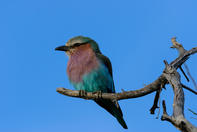
In order to survive in the animal kingdom, an individual must find enough food to sustain itself while avoiding danger in the form of predators.
But survival is about more than staying alive, it’s about being able to find a mate and reproduce successfully to ensure personal genes are perpetuated. Within the bird class, species are divided between these two ‘schools of survival’ and both have their costs and benefits.
Having bright colours such as the lilac-breasted roller, makes a bird an appealing mate. His visual attire is further enhanced by exhibitionistic displays. The ‘roller’ gets its name from its propensity to noisily take to the sky, flying upwards until it reaches an imaginary summit from whence it shoots downwards rocking side to side on its wings or ‘rolling’ all the while vocalising in a less than songful manner.
Blend In
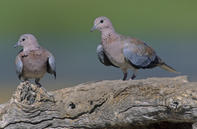
Birds such as doves and sparrows select less for colour and more for tones that blend them into their environment. Remaining undetected by predators is the priority and they will rely more on courtship rituals and song to locate a partner and maintain pair bonds.
Some of these duller species have hidden crests that can be erected to impress the females such as the red-crested korhaan. This bird will only introduce its colourful headrest when needed for courtship. Some birds take blending into the extreme and species such as nightjars, sandgrouse and Scops owlets use cryptic colouration to mimic their surrounds so perfectly that they are almost undetectable.
Which Pigment?
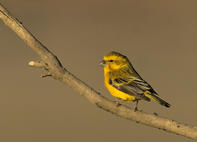
There are two main pigments found in birds. The primary pigment is melanin. This is the pigment responsible for the colour black. It not only provides pigmentation but also fortifies the feathers. This reinforcement is especially important in the primary and secondary feathers of a bird’s wings, the feathers used in flight.
The second main pigment group found in birds is the carotenoids. This gives feathers the colours of yellow, orange or red. The weavers are a common family of birds adorned with this pigment. Small yellow-fronted canaries are also commonly seen yellow birds that occur in the Lowveld. Small flocks can often be seen flying up from beside the roads where they collect seed.
Iridescent Glow
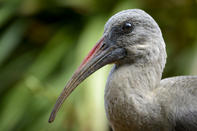
Glossy starlings are some of the most striking birds spotted in the Lowveld. Their feathers have an iridescent sheen that shimmers with hues of blue, green and purple depending on how the light falls on the bird. Remarkably this effect is not caused by pigmentation and in fact glossy starlings have no colour pigment in their feathers at all.
There is some melanin - the dark pigment that adds strength to the feathers. The colourful effect is created by the manner in which the keratin (the structural material that makes up the feathers) is layered. As light falls on the feathers, these keratin layers reflect different wavelengths of light differently resulting in the spectacular iridescence. The underlying melanin absorbs other colours and in poor light makes the whole bird appear black.
The well known, noisy Hadeda ibis has iridescent shields on its wings.
Tyndal Scattering
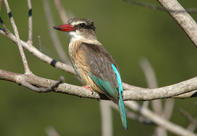
The bright blue of the kingfisher’s feathers is caused by a concept known as tyndal scattering. Once again the keratin of the feathers comes into play but instead of the layering alone affecting the reflection of particular wavelengths of light (as with iridescence), small air spaces interfere and also scatter the light. Scattering of the shorter wavelengths result in the spectacular blues of kingfishers and rollers.
The bright greens of bee-eaters and bushveld parrots are also produced by tyndal scattering when combined with the presence of carotenoids in the feathers. When all the light falling on a pigment-less feather is scattered, the feather may appear white or in the presence of melanin, grey.
Turaco’s Are Different
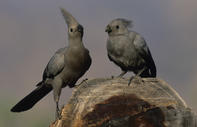
The turaco family has some pigments that are unique to them. This includes a green pigment called turacoverdin and a red pigment called turacin. The green in turaco’s feathers is the only green caused by an actual pigment. All other greens in birds’ feathers are caused by either tyndal scattering (in the presence of yellow carotenoids) or a combination of yellow and black pigment in the feathers, which produces the olive colours of bush shrikes and thrushes.
By Megan Emmet